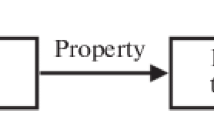Abstract
Exposure to volatile organic compounds can lead to asphyxiation, pneumonia like conditions, comas, seizures and irreversible lung, kidney and central nervous system damage. Volatile organics are additionally extremely flammable and explosive, making their early detection in the immediate environment increasingly important. Metal oxide semiconductor (MOS) gas sensors present a potential technology to detect such gases.
Metal oxide semiconducting (MOS) gas sensors represent a cheap, robust and sensitive technology for detecting volatile organic compounds. An array of five thick film MOS gas sensors was fabricated, based on vanadium pentoxide inks. Production took place using a commercially available screen printer, a 3 x 3 mm alumina substrate containing interdigitated electrodes and a platinum heater track. V2O5 inks were modified using zeolite beta, zeolite Y, mordenite & ZSM5 admixtures. Sensors were exposed to three common reducing gases, namely acetone, ethanol, and toluene, and a machine learning technique was applied to differentiate between the different gases. Sensors produced strong responses to all gases. Zeolite modified sensors were found to increase the responsiveness of the sensors compared to umodified V2O5 in a number of cases. Machine learning techniques were incorporated to test the selectivity of the sensors. A high level of accuracy was achieved in determining the class of gas observed.
Similar content being viewed by others
References
I. Raible, M. Burghard, U. Schlecht, A. Yasuda, & T Vossmeyer. Sensors and Actuators B: Chemical, 106, 2, 730 (2005)
A. D. Raj, T. Pazhanivel, P. S. Kumar, D. Mangalaraj, D. Nataraj, & N Ponpandian. Current Applied Physics, 10(2), 531 (2010)
S. Bordiga, C. Lamberti, F. Geobaldo, A. Zecchina, G. T. Palomino, & C. O Areán. (1995). Langmuir, 11(2), 527–533.
O. Hugon, M. Sauvan, P. Benech, C. Pijolat, & F Lefebvre. (2000). Gas separation with a zeolite filter, application to the selectivity enhancement of chemical sensors. Sensors and Actuators B: Chemical, 67(3), 235–243.
J. A. Martens, J. Perez-Pariente and P. A. Jacobs, in Chemical Reactions in Organic and Inorganic Constrained Systems, NATO ASI Ser. C, 1986, vol. 165, p. 115.
J. Coronas, & J Santamaria. (2004). The use of zeolite films in small-scale and micro-scale applications. Chemical Engineering Science, 59(22), 4879–4885.
WEKA 3 Data mining with open-source machine learning software (www.cs.waikato.ac.nz/ml/weka/) (Accessed 17th March 2016)
N. R. Meshram, S. G. Hegde, S. B. Kulkarni, & P Ratnasamy. Applied catalysis, 8(3), 359–367. (1983)
J. F. Liu, X. Wang, Q. Peng, & Y. A. D. O. N. G Li. (2005). Vanadium pentoxide nanobelts: highly selective and stable ethanol sensor materials. Advanced Materials, 17(6), 764–767.
T. Ishihara, K. Shiokawa, K. Eguchi, & H Arai. (1989). The mixed oxide A1 2 O 3· V 2 O 5 as a semiconductor gas sensor for NO and NO 2. Sensors and Actuators, 19(3), 259–265.
Author information
Authors and Affiliations
Rights and permissions
About this article
Cite this article
Pugh, D.C., Parkin, I.P. Zeolite Modified Vanadium Pentoxide Sensors for the Selective Detection of Volatile Organic Compounds. MRS Advances 1, 3349–3354 (2016). https://doi.org/10.1557/adv.2016.554
Published:
Issue Date:
DOI: https://doi.org/10.1557/adv.2016.554




